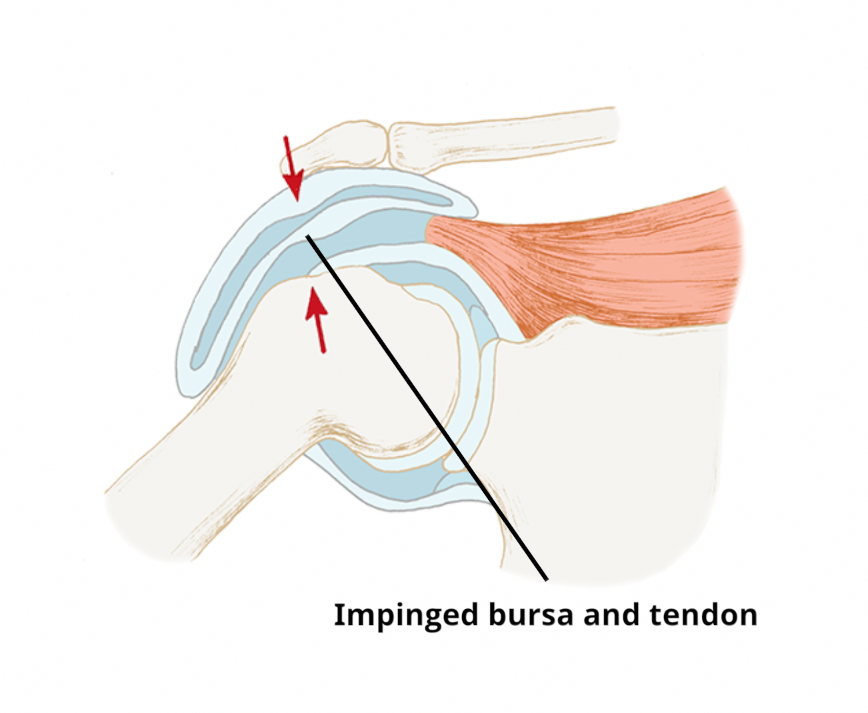
Shoulder subacromial pain syndrome potentially results in pain, weakness and loss of movement of the shoulder usually with overhead activities.
It is commonest in individuals over 40 years old. It often associated with change in activities, particularly when due to overuse eg. increase in gym or repetitive overhead activities.
The subacromial bursa and rotator cuff muscle tendons lie within the sub-acromial space. Subacromial pain refers to a condition where these structures get irritated within the subacromial space, usually when the arm is raised above shoulder height, resulting in pain down the upper outer arm.
While the majority of cases arise from overuse, poor posture, chronic damage to the rotator cuff tendons , poor muscle function and spurs from the adjacent acromioclavicular joint may be contributing factors.
How is subacromial pain syndrome treated?<
Non surgical management
The majority of patients can be managed without surgery.
Modifying activity
As the condition is often triggered by strenuous or repetitive overhead activities modification and avoidance of aggravating activities is important initially.
Exercises
In the majority of cases, subacromial pain syndrome can be managed very effectively by following a regular exercise routine to optimise flexibility, strength and coordination of the affected shoulder joint.
These are suggested exercises only. If you are at all concerned about whether these exercises are suitable for you or if you experience any pain while doing them, please seek appropriate clinical advice from your GP or Physiotherapist.
Using painkillers when needed
Over-the-counter analgesia is available through pharmacies when needed. Paracetamol is most commonly prescribed. Anti-inflammatories, such as Ibuprofen, are also used, but as there is little or no inflammation involved in osteoarthritis these are best avoided without discussing with your GP. Side effects are even more common than with paracetamol so please ensure to take appropriate medical advice. There is a good booklet on the Arthritis Research UK website with information about the various drug options.
Corticosteroid injection therapy
For individuals with subacromial pain syndrome who continue to suffer disabling symptoms despite a course of supervised exercises, a corticosteroid injection can be offered as the next line of treatment. Where symptoms are severe and patients are unable to engage in physiotherapy an injection may be offered to improve pain prior to starting rehabilitation. You can read more about local corticosteroid injections here.
Surgical management
If non surgical management outlined above does not resolve symptoms your clinician may offer a referral for consideration of surgical treatment.
This usually takes the form of sub acromial decompression, a procedure that involves clearing the subacromial space to allow pain free movement. It should be noted, however, that proper rehabilitation after surgery is necessary to ensure optimal outcome. Further information on surgical management can be found in the links below.
https://www.shoulderdoc.co.uk/
Rotator Cuff Injury: Causes, Symptoms, and Treatment | Patient